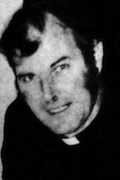
The British government has apologised for protecting a ‘suspect’ in the 1972 Claudy bombing, but is still refusing to reveal to the public the full details of what it knows about the attack.
Three bombs killed nine people -- five Catholics and four Protestants -- in the County Derry village. The attack took place less than six months after the Bloody Sunday massacre and amid surging support for the IRA. No-one was questioned in regard to the bombing, which was blamed on the IRA, but which it denied.
The North’s Police Ombudsman has now found that senior RUC police sought the assistance of the British government to handle the case of local priest Fr James Chesney, who the RUC said was heavily involved in the attack.
After a meeting with the Catholic church -- at the highest level -- the church agreed to move Chesney to a parish across the border in Donegal, where he lived until his death in 1980.
Ombudsman Al Hutchinson found that an “RUC decision to seek the (British) government’s assistance through an engagement with senior figures in the Catholic Church, and then to accept an understanding that was reported back to them, compromised the investigation of the Claudy bombing; failed those who were murdered and injured; and undermined the police officers who were investigating the atrocity”.
British Secretary of State Owen Paterson has ruled out a public inquiry into the cover-up, despite calls for answers from survivors of the attack.
Paterson, who made an apology to the Claudy families on behalf of the British government, refused any further inquiry as it “wouldn’t have anyone to interview.” He also refused to permit the release of government papers on the subject.
According to the Ombudsman’s report, ‘intelligence’ files held by the RUC alleged Fr Chesney was the IRA’s director of operations in south Derry, and had been directly involved in the 1972 Claudy bombings.
A public appeal for more information on Chesney by the Ombudsman has been greeted with suspicion.
Republicans familiar with the IRA campaign in that area said the Ombudsman appeared to have taken RUC intelligence reports as hard evidence.
“It is extraordinary that the Ombudsman’s report into the Claudy bombing pours judgment upon the late Fr Chesney and then asks for witnesses to come forward with evidence to support its case,” said a former Derry-based IRA Volunteer, Shane Paul O’Doherty.
“Would this be putting the hanging before the trial?”
After he moved to Donegal, the RUC files alleged that he continued to engage in IRA actions, a detail which appalled the Claudy victims and amazed Mr O’Doherty.
“If Fr Chesney was involved in the IRA unit that bombed Claudy and if he was later still involved in the IRA while based in Malin Head, Donegal, it is extraordinary that IRA persons in the Derry brigade never heard of him until 2002 and were never able to make use of any of his services in the early or mid-1970s in Derry city or in Donegal,” Mr O’Doherty said.
Retired bishop of Derry Edward Daly said that he still doubted that Fr Chesney was heavily involved in the IRA, despite the conclusions of the Ombudsman’s report.
Bishop Daly interviewed the south Derry priest twice, in 1974 and 1977, about claims that he was involved in the attack. He said that on each occasion Fr Chesney vehemently denied the allegations.
He dismissed claims by unionists that the British decision not to arrest Chesney was intended to protect the Catholic church.
“The failure of the RUC to arrest and question Fr Chesney in 1972 or later is beyond understanding,” the Derry clergyman said.
“This failure is graphically described in yesterday’s report. I believe that this constituted a huge betrayal of the Claudy victims.”
The Claudy bombing has been compared to the 1998 Omagh bombing, in that the public outcry over civilian casualties almost derailed the IRA campaign at a time when it was building momentum.
The admission of a British cover-up over the bomb attack has now prompted similar questions over the possible involvement of ‘agents provocateurs’ in Claudy. However, Chesney’s role, if any, remains a mystery.
![[Irish Republican News]](https://republican-news.org/graphics/title_gifs/rn.gif)
![[Irish Republican News]](https://republican-news.org/graphics/title_gifs/harp.gif)

